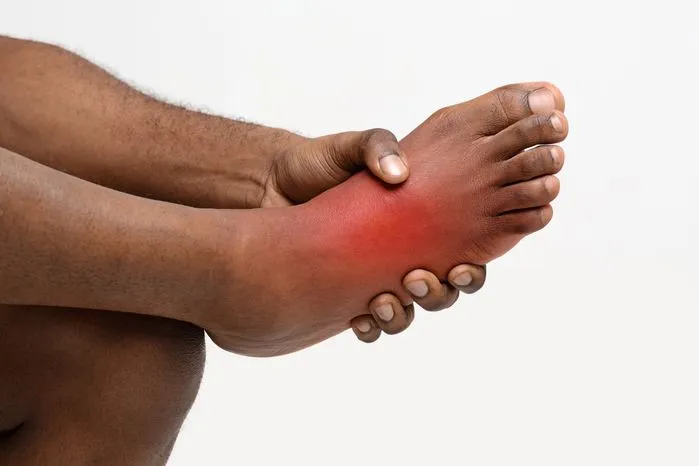
It’s general knowledge that eating well is good for us. A diet rich in leafy greens, whole grains, colorful fruits and vegetables, and legumes improves our health and well-being. So does limiting sugar, eating lean proteins, and good fats. But what does that have to do with feet? A nutrient-dense diet can help protect our lower limbs from ulcers which if left untreated necessitate lower limb amputation.
What is Nutritional Analysis?
Nutritional analysis is a calorie-based process that involves determining the nutritional content of food. It’s a very detailed and time-consuming process since different foods have a different number of calories per ounce. In addition to calories, a nutrition analysis label looks at three other main nutrients; fats, carbohydrates, and proteins, and is displayed in a tabulated nutrient label for ease of reading.
There are various methods used to perform nutritional analysis. The most common ones are nutritional analysis lab testing and nutritional analysis software. Laboratory analysis involves sending food to a lab to determine the nutritional content of the food. It utilizes scientific methods and equipment to yield the actual levels of nutrients in prepared food thus providing high accuracy. Laboratory analysis takes into account changes in nutritional value that occur from processing or cooking the food.
A nutritional analysis software allows the user to determine the nutritional content of food. However, the quality of analysis greatly depends on the degree of accuracy and standardization of the recipes. Standardized recipe nutritional analysis are those that are adapted and retrieved for use by a foodservice operation. Nutrient software analysis is limited by the selection of ingredients available in the food database. It also does not consider the effects of cooking and processing on food.
The Impact of Nutritional analysis
Diabetes and diabetic complications such as Peripheral artery disease are significant causes of lower extremity amputations. The American Diabetes Association estimates that at least one person loses a limb from diabetes-related complications every 30 seconds.
A nutritional analysis testing can help in preventing limb loss by providing dietary guidelines. Data provided on the nutrition facts table is based on the daily recommended amounts (%DI) and serving size (ounces). The (%DI) helps consumers choose products with higher nutrient content, thus selecting healthier and better food. The recommended amounts are mostly an overall calculation and should be taken as a rough estimate.
Calorie needs are individual and vary daily or monthly. The best way to determine your daily calorie intake is by scheduling an appointment with a qualified dietitian who will take you through how to do a nutritional analysis.
Benefits of Nutrient-Rich Foods for Amputation Prevention
From the nutritional analysis definition, a high nutrient food is a powerful ally in amputation prevention. Eating certain foods and limiting others in daily diet can help people, especially those at risk of limb amputation, manage their blood sugar levels and cholesterol.
High blood cholesterol leads to constricted arteries which in turn causes reduced blood flow to the feet. Due to poor circulation, there’s a higher risk of developing non-healing ulcers, infection, death of tissue, and ultimately, limb loss.
Whole Grains
Whole grains have a higher fiber content than refined white grains. Fiber is an essential nutrient to the body as it slows down digestion which encourages the blood sugar levels to remain stable. Also, a nutrition analysis program places whole grains lower on the Glycemic Index (GI) meaning they have a lower impact on blood sugar. Good examples of whole grains include brown rice, whole grain bread, millet, and buckwheat.
Green Leafy Vegetables
Green leafy vegetables are beneficial to diabetics as they are high in antioxidants and starch-digesting enzymes. A case study found that drinking kale juice frequently may help regulate blood sugar levels and improve blood pressure in patients with hypertension.
Citrus Fruits
Citrus fruits such as oranges, lemons, and grapefruits are essential for diabetics and PAD patients. Scientists have found them to have two flavonoid antioxidants – hesperidin and naringin – which have antidiabetic effects. Citrus fruits are also a great source of vitamin C – an immune booster – folate and potassium.
Probiotics
Probiotics are helpful gut bacteria that improve digestion and overall health. A 2011 research observed that regular consumption of probiotic yogurt could improve cholesterol levels in people with type 2 diabetes. A lower cholesterol level reduces the risk of PAD and thus fewer chances of undergoing an amputation.
Foods To Regulate Or Avoid
The best way to manage dietary changes is by formulating and learning how to write a nutritional analysis by balancing high and low GI foods. High GI foods include refined white bread, white rice, pumpkin, puffed rice, and fruits such as pineapple and melon. Other foods to regulate or completely cut off include:
Limiting Carbohydrate Intake
Carbohydrates are an important part of all meals. However, people at risk of amputation should limit their carb intake or pair it with a healthy protein or fat source. Research shows that a low-carb diet is beneficial in managing hyperglycemia and blood pressure.
Refined Sugar and Sugary Drinks
Prolonged blood sugar can cause neuropathy – nerve damage – which in turn causes diabetic foot ulcers. When blood sugar is not regulated, you have high blood fats, hypertension, and obesity, all of which are risk factors for lower extremity amputation. It’s, therefore, best to avoid sources of refined sugar, such as candy, biscuits, and cakes.
Keep off sugary drinks in the nutritional deficiency analysis group such as shakes, some coffees, and energy drinks. They lack any beneficial nutrients and disrupt the body’s insulin levels causing an imbalance.
Bottom Line
Eating a nutrient-rich diet can save your limbs by lowering inflammation, controlling blood sugar levels, and reducing the risk of arterial diseases. However, no single diet offers more benefits than another. That’s why a nutritional analysis provides the best platform by formulating an all-inclusive diet plan to reduce or eliminate the risk of lower extremity amputation by encouraging healthy living and food choices.

















